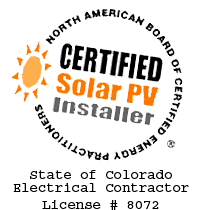Comparison of Solar Cathodic Protection Units
With the competition typically coming in at just 40% uptime, it's no wonder
Remote Solar is quickly becoming
the company of choice for performance and reliability in solar cathodic protection.
Following is a comparison of features between our cathodic protection units and what is typically offered by the competition:
This comparison is further detailed in our PDF presentation:
Oil Industry Solutions from Remote Solar [PDF]
Our Cathodic Protection Units
Others
Systems sized to stay on 95% of the year.
Undersized, may be asleep half the time.
We use
HUP Batteries at 2100 cycles to 80% discharge with a 10 year warranty.
L16 type batteries with typically about 500 cycles to 80% discharge and a 2 year warranty.
Batteries last 3 to 4 times longer, need water only twice a year, have a limited discharge, and won't freeze.
Batteries may only last a couple of years and need watering every couple of months. System shuts down sooner in bad weather, batteries may freeze and crack.
Solar World monocrystalline modules made in USA since 1977.
They are in our opinion the best in the business. They produce more power in cloudy weather.
Commonly polycrystalline modules imported from China which only produce rated power in perfect conditions and for the first couple of years.
Optional wind turbines for charging in cloudy weather and at night.
Wind turbines unavailable.
All cathodic protection electronics rated to at a least 30 amps.
Cathodic protection electronics barely rated to handle design.
Charge controller rated to over 80 amps, with temperature sensor at batteries to charge batteries more fully in cold weather.
Typically only 30 amp rated controller. A temperature sensor (if present) is not at batteries, so is innaccurate.
Max Power Point Tracking electronics gets 10 to 20% more power.
Never make full rated power from their modules.
Designed by engineers with performance modeling software, based on local weather data and over 250 systems of experience.
Simple "one size fits all" design that does not take local climate into consideration.
Wind loading designed for up to 150 mph if needed, using patented ground anchor and outrigger systems
No consideration of local wind conditions.
Wiring by NABCEP certified, licensed electricians with decades of experience.
Electricians not typically NABCEP certified.
The Bottom Line
Remote Solar Cathodic Protection Units last longer, need less maintenance, and protect your pipeline over 95% of the year.
Battery replacements make their systems much more expensive in the long run. Cathodic protection units may be asleep on the job more than half the time.











